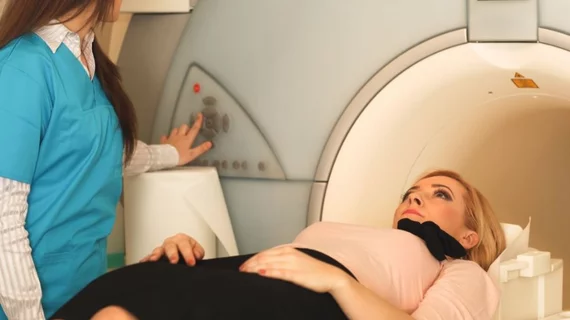Breast MRI improves quality of care for DCIS patients
Performing MRI on patients with non-invasive breast cancer can provide additional value, according to a new study published in Academic Radiology.
The authors studied data from 295 patients with ductal carcinoma in situ (DCIS), focusing on 123 patients who received both mammography and breast MRI. The mean patient age was 57 years old. The mean tumor size was 39.6 mm.
Overall, the DCIS was clinically occult in the mammography results for more than 24 percent of patients. DCIS was clinically occult in more than 1 percent of the breast MRI results.
Mammography accurately measured tumor size in all cases of low grade DCIS, underestimated intermediate grade DCIS by a median of 1 mm and underestimated high grade DCIS by a median of 10.5 mm. Breast MRI, on the other hand, overestimated low grade DCIS by a median of 1 mm, accurately measured all intermediate grade DCIS and overestimated high grade DCIS by a median of 1 mm.
“In DCIS the most important treatment-related risk factor for tumor recurrence is residual DCIS,” wrote Heike Preibsch, MD, University Hospital Tuebingen in Tuebingen, Germany, and colleagues. “Accurate preoperative size estimation to guide surgical excision is therefore crucial. In the present study MRI showed a better detection rate than mammography in the diagnosis of pure DCIS.”
The authors also noted that, of the two cases of DCIS that were clinically occult in the breast MRI results, one could be detected using mammography and the other was “occult on both modalities.”
Preibsch et al. concluded that breast MRI is “a promising tool in surgical decision making,” noting that additional research is required to “identify specific imaging features of different tumor grades to further optimize individual patient treatment planning.”

